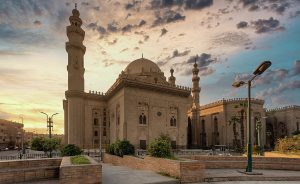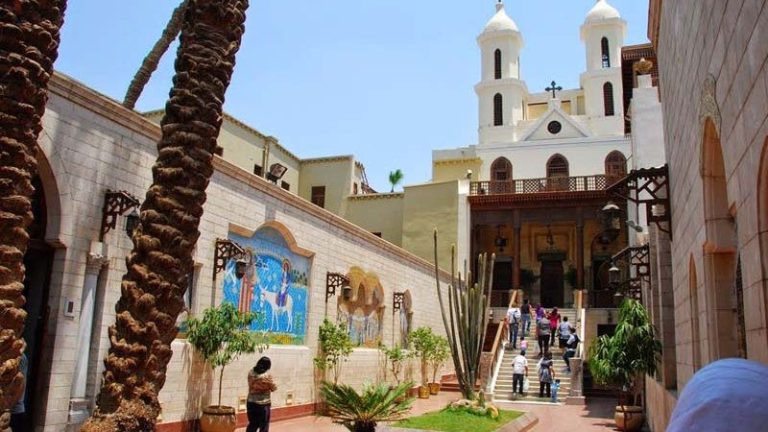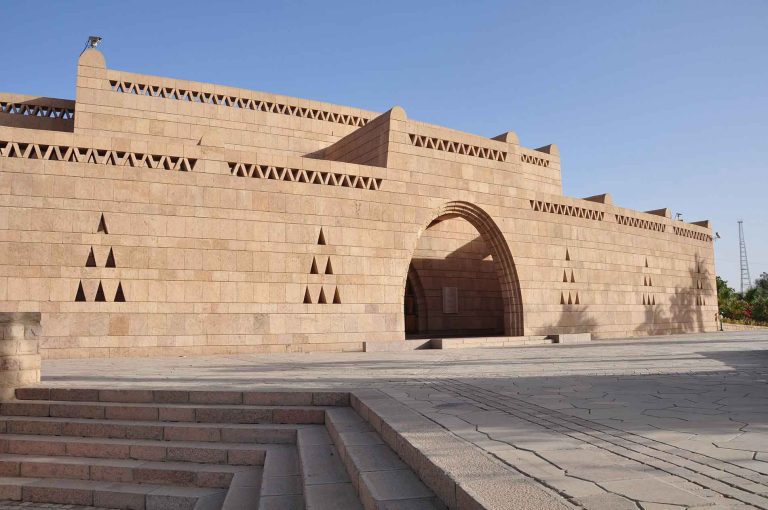Sultan Hassan Mosque: A Masterpiece of Mamluk Architecture in Cairo
Standing proudly in the heart of Islamic Cairo, the Sultan Hassan Mosque is a breathtaking testament to the grandeur of Mamluk architecture. Built in the 14th century, this iconic mosque is not only a place of worship but also a historical and cultural landmark that attracts visitors from around the world. Join us as we explore the history, design, and significance of the Sultan Hassan Mosque, one of Cairo’s most awe-inspiring attractions.
A Brief History of Sultan Hassan Mosque
The Sultan Hassan Mosque was constructed between 1356 and 1363 during the reign of Sultan Hassan, a Mamluk ruler known for his ambitious building projects. The mosque was designed to serve as a mosque, madrasa (Islamic school), and mausoleum, reflecting the Sultan’s vision of creating a center for religious and educational activities.
Despite its grandeur, the mosque’s construction was marked by challenges, including financial difficulties and political instability. Sultan Hassan himself was overthrown and killed before the mosque was completed, and his body was never interred in the mausoleum intended for him. Nevertheless, the mosque remains a symbol of the Mamluk era’s architectural and cultural achievements.
Architectural Highlights
The Sultan Hassan Mosque is renowned for its massive scale, intricate details, and harmonious proportions. Here are some of its most notable features:
Exterior Design:
The mosque’s imposing façade is made of stone and features towering walls, arched windows, and intricate carvings. Its two minarets, one of which collapsed during construction, are among the tallest in Cairo and offer stunning views of the city.Courtyard:
At the heart of the mosque is a spacious courtyard surrounded by four iwans (vaulted halls), each dedicated to one of the four Sunni schools of thought. The courtyard is adorned with marble floors, elegant columns, and a central fountain for ablutions.Prayer Hall:
The prayer hall is a masterpiece of Islamic architecture, with its high ceilings, ornate decorations, and a beautifully carved mihrab (prayer niche) that indicates the direction of Mecca. The hall’s grandeur reflects the spiritual significance of the mosque.Mausoleum:
The mosque’s mausoleum, located behind the prayer hall, was intended to house the tomb of Sultan Hassan. Although the Sultan was never buried here, the mausoleum is a stunning space with a large dome and intricate decorations.Educational Facilities:
The mosque originally housed four madrasas, each dedicated to teaching one of the four Sunni schools of thought. These spaces reflect the mosque’s role as a center of learning and scholarship during the Mamluk era.
Why Visit Sultan Hassan Mosque?
The Sultan Hassan Mosque is more than just a religious site; it is a cultural and historical treasure that offers visitors a glimpse into Egypt’s Islamic heritage. Here are some reasons to add it to your Cairo itinerary:
Architectural Beauty: The mosque’s Mamluk design is a visual delight, with its intricate carvings, towering minarets, and harmonious proportions.
Historical Significance: As one of the most important mosques from the Mamluk era, it holds a special place in Egypt’s history.
Spiritual Atmosphere: The mosque’s serene interiors provide a peaceful retreat from the bustling streets of Cairo.
Proximity to Al-Rifa’i Mosque: Located right next to the Al-Rifa’i Mosque, it offers a unique opportunity to explore two architectural masterpieces in one visit.
Practical Information for Visitors
Location: The Sultan Hassan Mosque is located in the Citadel area of Islamic Cairo, near the Al-Rifa’i Mosque.
Opening Hours: The mosque is open daily from 8:00 AM to 5:00 PM, except during prayer times.
Entrance Fee: A small fee is required for entry, which helps maintain the site.
Dress Code: Visitors are expected to dress modestly, with shoulders and knees covered. Women may be asked to cover their hair.





